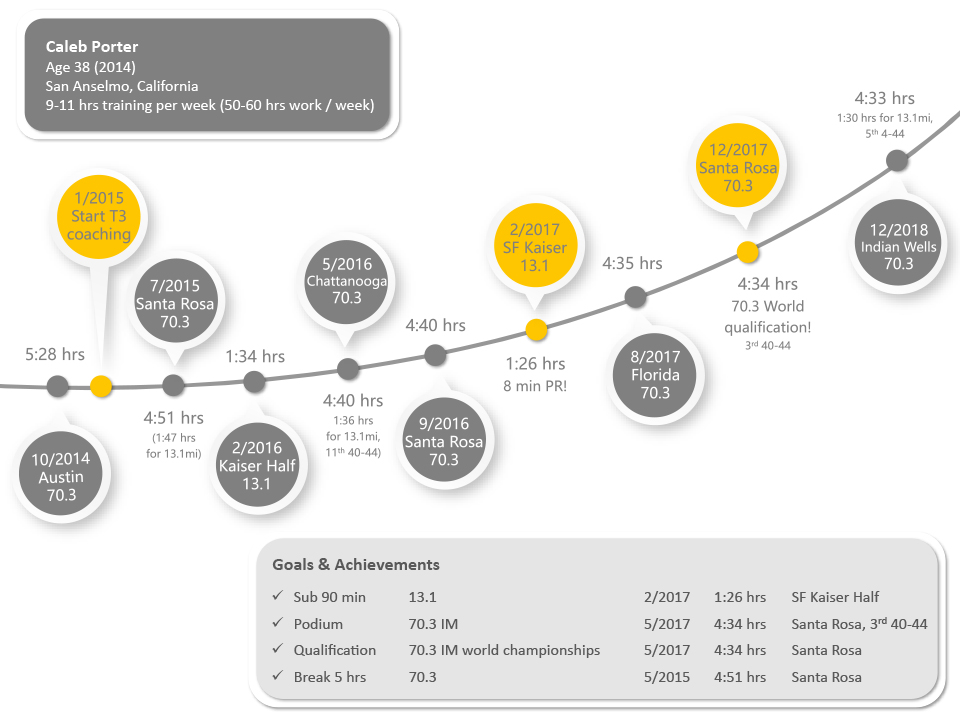As a coach, one of the most rewarding aspects of my job is guiding athletes through their training journeys. Yet, one common challenge we encounter is finding the right balance of training stimulus for each individual. Whether you’re a seasoned athlete or just starting out on your fitness journey, understanding how to tailor your workouts to maximize results is key. In this blog post, I’ll share insights into how to find your training sweet spot for optimal performance and progress.
First and foremost, it’s important to recognize that each athlete responds differently to training. What works wonders for one person may not yield the same results for another. This concept of individual variability is at the core of effective coaching.
If you’re not seeing the progress you expect, it’s essential to assess whether the training stress was appropriate for your level, capabilities, and specific needs. As a coach, I emphasize the importance of open communication with athletes to gauge how they’re responding to their workouts. By understanding individual responses, we can make informed decisions about adjusting training protocols accordingly.
Finding the right balance of training stimulus is key to unlocking your full potential. It’s not just about working harder or adding more volume; it’s about finding what works best for you. This might mean incorporating more aerobic training to build endurance or dialing back volume to focus on high-intensity intervals effectively.
—> KNOW WHERE WE TRYING TO GO
As a coach, I work closely with athletes to fine-tune their training programs based on their goals, abilities, and feedback. We “experiment” with different approaches to find the optimal balance that promotes progress while minimizing the risk of burnout or injury.
—> How do we know where to go?
The direction is determined by where we ultimately want to end up in the short, medium and long term.
—> What determines the right training balance?
Progressive overload is not a one-size-fits-all concept; rather, it’s determined by a multitude of factors, starting with the demands of your specific event.
For instance, a sprint triathlete requires a blend of high aerobic capacity (VO2 max), efficient lactate shuttling and clearance, neuromuscular power, and improved lactate threshold (LT2).
Moreover, training must align with your individual physiology, taking into account factors such as muscle fiber composition (fast-twitch or slow-twitch), aerobic and anaerobic development, preferred fuel utilization (fat vs. carbohydrates), and psychological factors like focus and confidence levels.
Experience level also plays a significant role in determining the focus of training.
Beginner triathletes may need to prioritize developing aerobic fitness, mastering basic skills, and establishing consistent training routines.
Additionally, the mechanics of movement—such as skill limitations, range of motion, and bodyweight—must be considered to optimize training effectiveness.
Timing is crucial too. Training plans must be adjusted according to the time of the year and periodization principles, ensuring peak performance during key events.
Effectively managing intensity is another aspect of progressive overload. Balancing low and high-intensity training sessions (LIT vs HIIT) is essential for maximizing adaptation while minimizing the risk of overtraining or injury.
In essence, progressive overload is a complex interplay of event demands, individual physiology, experience level, mechanics, timing, and intensity management.
By understanding and addressing these factors, athletes receive tailored training programs for optimal performance and long-term success
Progression Through Healthy Overload
At the heart of effective training is the concept of progression through healthy overload. To gain strength and fitness (=Endurance, V02max, and overall performance) we must challenge our bodies and minds in a systematic and progressive manner.
This means gradually increasing the intensity (=weights, wattage, pace, speed), duration, or frequency of workouts over time while allowing for adequate recovery. It’s about pushing your limits just enough to stimulate adaptation without pushing too far and risking overtraining.
Training availability
And as mentioned above, it is also important to note that for beginners, the journey begins with simply turning up to training, making themselves available to train, then acquainting themselves with basic skills, such as learning how to swim, mastering fundamental movements, or establishing a basic/general endurance level.
Building a sound base and prioritizing metabolic health lay the foundation for progression to more intense training levels that may involve variations in intensity.
Finding your training sweet spot is a journey that requires patience, experimentation, and a willingness to listen to your body. As a coach, my role is to provide guidance, support, and expertise to help you navigate this process effectively.
By understanding your individual responses to training, tailoring the stimulus to fit your needs, and progressing through healthy overload, you can unlock your full potential, transitioning to the next level, and achieve your goals.
Together, let’s embark on this journey towards peak fitness and lasting success.



